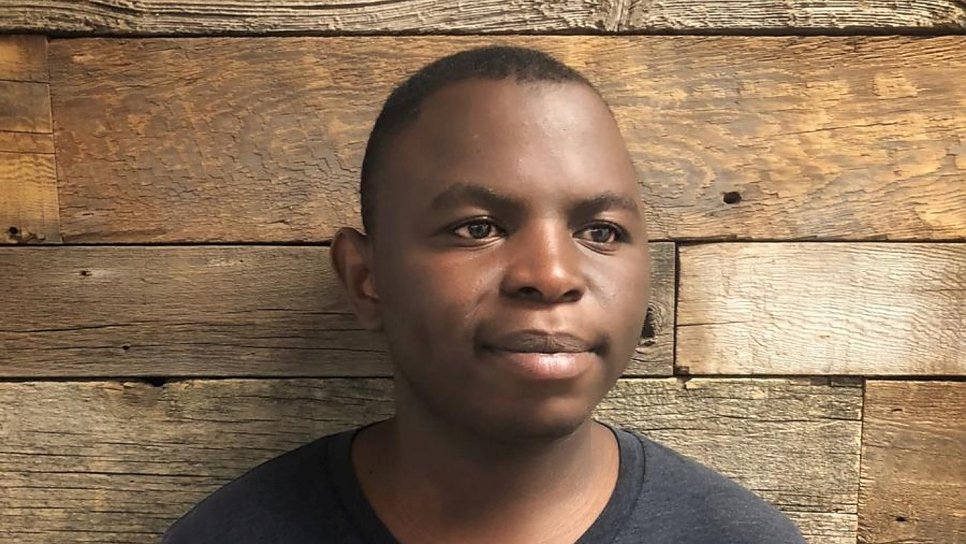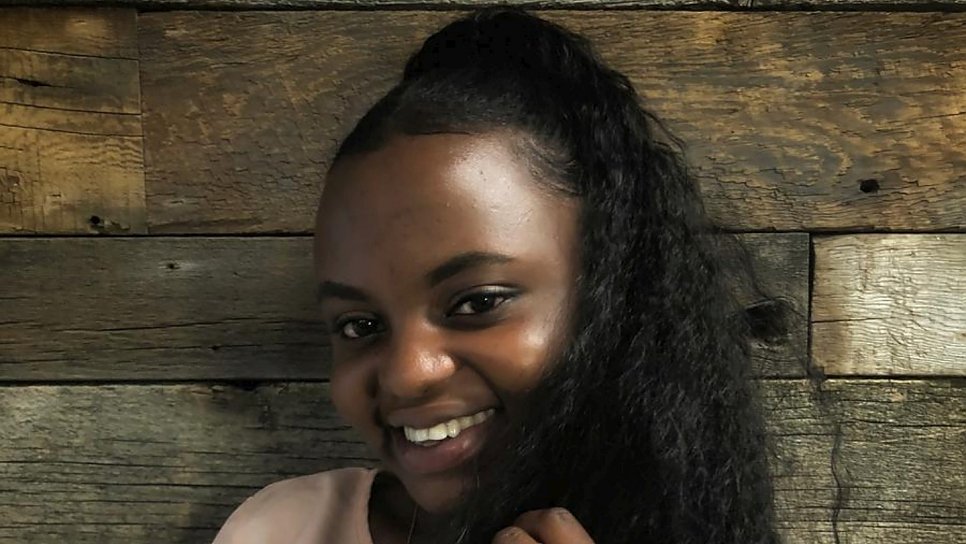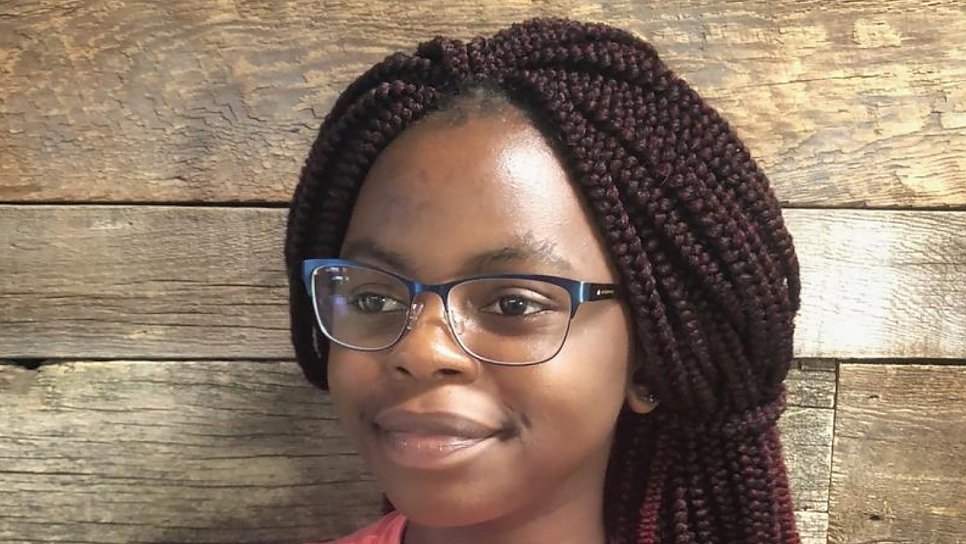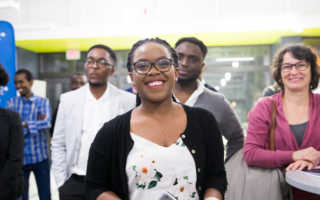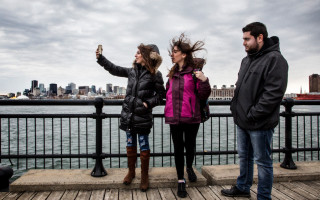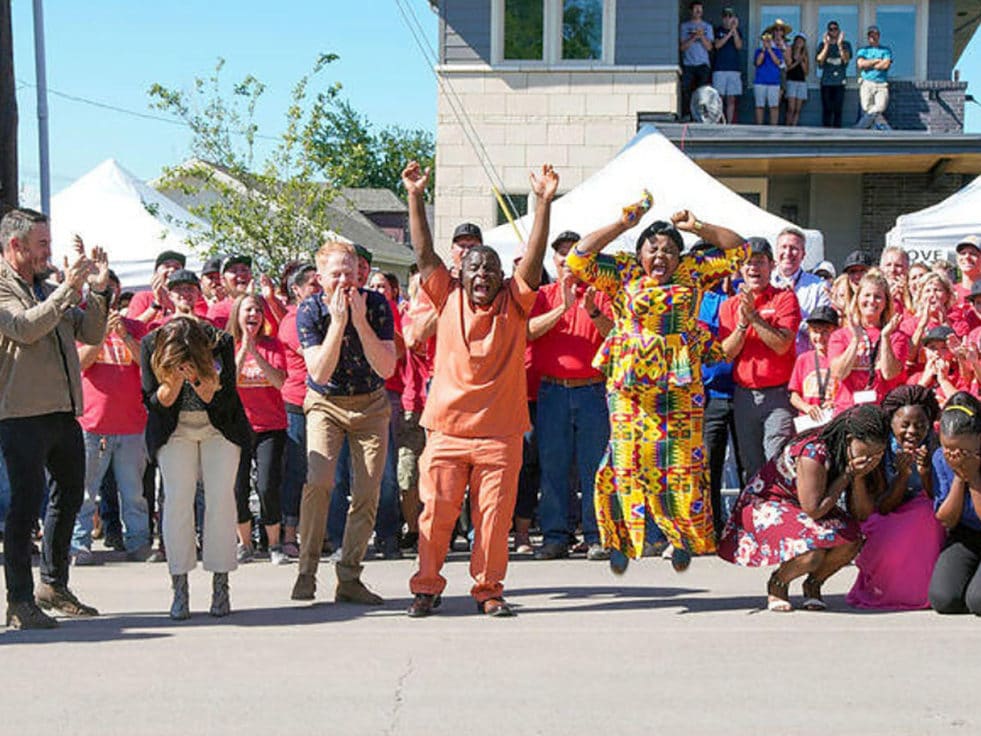
The Barobi family is overcome with joy on first seeing their new home, as designers Darren Keefe, Carrie Locklyn, host Jesse Tyler Ferguson, builders from Wadman Corporation, and neighbours share the emotional moment. © UNHCR/Casey Durkin
American reality TV series, HGTV’s “Extreme Makeover: Home Edition,” helps a community build a dream home so a family can build its future.
By Sarah Schafer in New York
This weekend, millions of viewers will watch the Barobi family, who fled violence in the Democratic Republic of the Congo (DRC), move into their “forever” home and start a new life.
Friends from their hometown in the U.S. state of Utah nominated the Barobis to appear on the American reality television show, HGTV’s “Extreme Makeover: Home Edition.” The show, hosted by UNHCR supporter Jesse Tyler Ferguson, remodels or builds homes for families who have survived devastating loss with grace and courage and are ready to thrive. It airs in the U.S. on 23 February at 9 p.m. New York time.
A combination we love: @jessetyler and the amazing Barobi family on @ExtremeHome #HGTVExtreme pic.twitter.com/kgTaxfBSYS
— UNHCR, the UN Refugee Agency (@Refugees) February 21, 2020
The show’s design team built a new, environmentally sound house from scratch for the Barobi family in less than one week. Hundreds of neighbours volunteered their DIY skills. The volunteers also were there to surprise the family when they saw their new place for the first time. UNHCR, the UN Refugee Agency, sent volunteers to paint, dig holes and landscape the backyard.
“Being a refugee is not by choice,” Azida, the eldest sister in the family, told UNHCR. “A refugee is someone who needs freedom, someone who needs to be heard, someone who needs to be helped, someone who needs to be welcomed, someone who needs to feel loved.”
In 2011, violence erupted in the DRC after national elections, and their father told the Barobi family they must run. As the family fled, rebels captured them. Ashraf, then 13, watched the rebels kill his father, his mother and his youngest sister. Then he gathered his two young sisters, Azida (now 17) and Habiba (now 15), and kept running. “I was not expecting to be called a refugee,” said Ashraf, now 20 and living in Ogden, Utah. “You are living a normal life, and the next day, you become a refugee.”
“Being a refugee is not by choice.”
The siblings made it to neighbouring Uganda and, with the help of a community leader, to the Kyaka II refugee camp. There, among thousands of refugees, they reunited with an aunt and a cousin who also had escaped the violence in the DRC. As a newly formed family unit, the Barobis lived together in the camp until 2014, when they learned they had been chosen to be resettled in America. They flew to Salt Lake City, Utah, and eventually settled in Ogden.
That is where the Barobi’s story began again.
Meet the Barobi family
What is a Refugee?
Refugees are people who have been forced to flee their country to escape violence or persecution. There are more than 25 million refugees in the world.
“A refugee is someone who needs to feel welcomed.”
The Barobi family’s story does not represent reality for most refugees. Most refugees want to go home when it’s safe. Until then, the majority try to rebuild their lives in a nearby country. Only a small percentage, less than one per cent, are resettled to a third country or even the country they fled if it has become safe again.
Meet the community
Related links:
-
- Watch full episodes on Sunday 23 February at 9/8c on HGTV or on HGTV GO.
- Learn more about the Democratic Republic of the Congo: DRC 101 blog
- Learn more about how you can help refugees here.
Originally published by UNHCR on 21 February 2020



